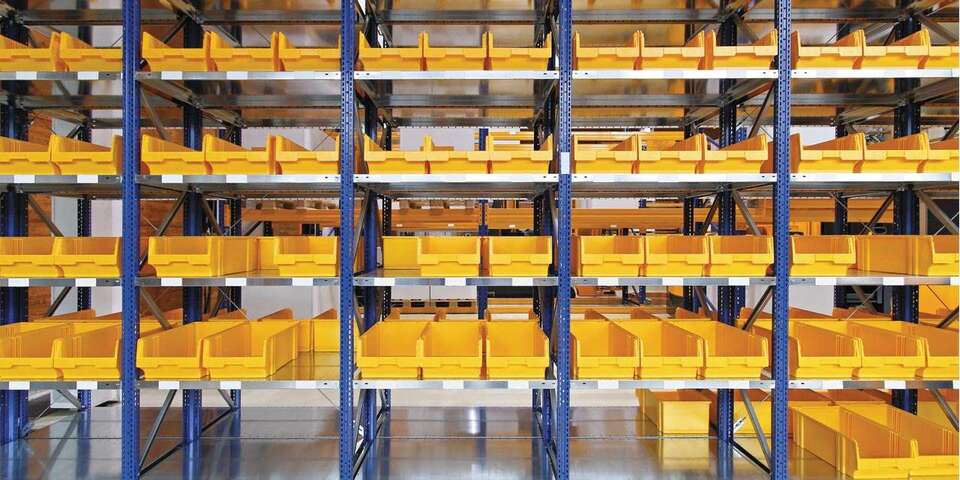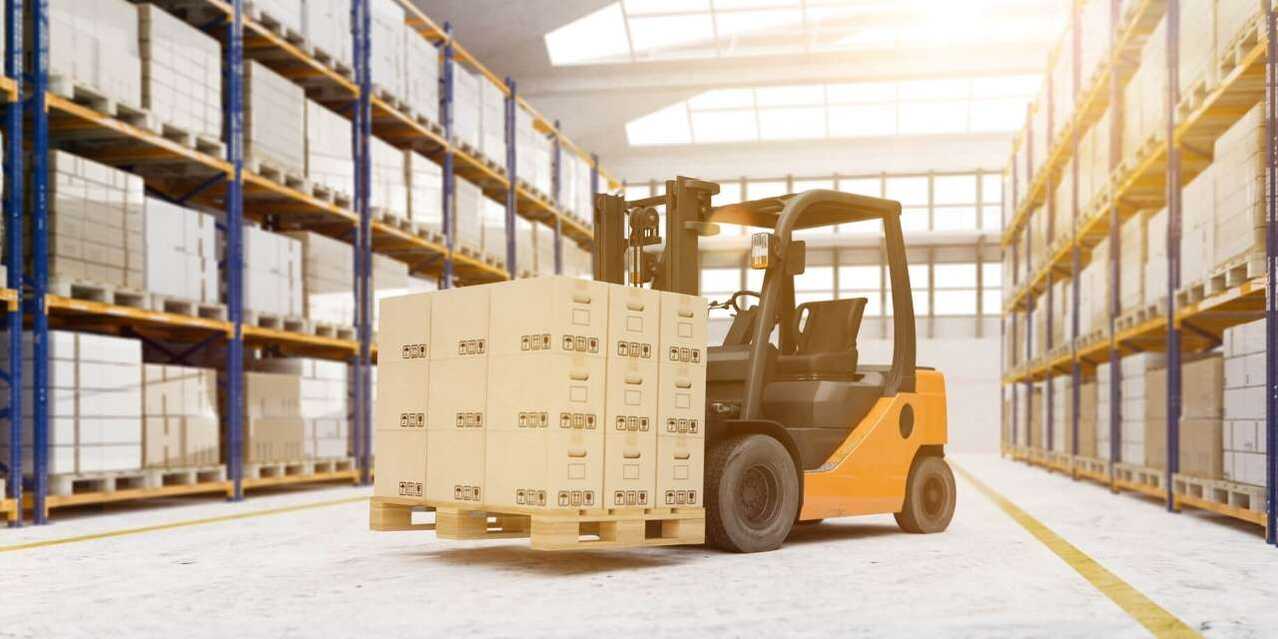In this operational checklist article, we will guide you in your choice of equipment for truly optimised B2B picking, as logistics managers know: a B2B warehouse has its own specific challenges. Large volumes of items require special handling techniques, as well as attention to the safety of operators during this crucial phase of order preparation. CONTENTS
CONTENTS
- Equipment to optimise your B2B storage
- Equipment to optimize your B2B handling
- Equipment to fully automate your B2B picking
1. equipment to optimise your B2B storage
First of all, if you want to optimise your picking in a B2B warehouse, you will need to optimise the storage of your articlesdiscover the different elements that will ensure an optimal B2B storage method for the picking of your operators.
The shelving to choose for B2B
The shelving in your B2B warehouse is a key element to choose, to ensure that your operators have quick and easy access to the products to be picked. We spoke to you about this in our guide to choosing your shelving: after having mapped your warehouse, the choice of shelving is crucial, and will depend on the weight and rotation of your items. In B2B, you generally have heavy assets, and picking is generally done by pallet trucks or forklifts. Therefore, think about considering the following options
- Galvanised steel shelving, which can hold up to 170 kg per shelf
- A chipboard tray, suitable for heavy items
- Pallet racking, specifically designed for pallets, as the name suggests
in addition to simple shelving, also consider the storage and arrangement of your items on these shelves
- Foldable bins save space and allow you to modulate storage according to seasonal picking requirements;
- Crates with horizontal or lateral opening give easy access to products;
- Plastic and folding pallet boxes are preferred for internal logistics, the cardboard pallet box version for shipping and temporary storage;
- Beaker bins allow you to store smaller products in bulk, and facilitate quick picking.
raja’s tip for B2B shelving optimised for picking? Different coloured bins and boxes help your teams to find their way around the warehouse, and thus facilitate the organisation of the stock and the flow of pickers. cta id=’301b2af9-4f38-4b43-b28f-3e244ed61077′]
Equipment to secure your warehouse shelving
It goes without saying that optimised shelving, whether for B2B or B2C, needs to be truly secure. So don’t forget
- Anchor your high shelving and racks in the concrete floor, as required by law above a certain height and weight;
- Installing feet and reinforcing braces on your racks to ensure their stability.
don’t forget: optimising your picking also means ensuring the safety of your warehouse.
Equipment for labelling your B2B racks
Improving your picking area also means saving time for your operators by clearly indicating where each type of item to be picked is located. This is where the labelling of your racks, human-sized shelving or bins will be of paramount importance. What equipment should you choose to do this?
- Label holders, adhesive or magnetic, which allow for quick updating of labels;
- Identification panels to differentiate the different shelves in large warehouses.
whether your picking is carried out using printed lists or mechanised, your teams will spend less time finding their way around your shelves.
2. Equipment to optimise your B2B handling
When you talk about B2B picking, you are necessarily talking about moving operators around your warehouse and carrying fairly heavy loads. Here again, the handling equipment you choose will make your operators’ work easier and will ensure both their performance and their safety. So make sure you choose the right equipment
- Tables and forklifts, manual or electric, that comply with current regulations;
- Special pallet trucks and stackers for heavy loads.
have you also considered the elements that will guide your pickers in their picking and, more generally, in the warehouse? This will include clearly visible and durable floor markings, which indicate the direction of traffic and respect for specific locations, or by safety mirrorsraja’s tip for improving safety during the picking phase is to equip your warehouse with protective barriers and straps on supports, which will prevent your operators from bumping into racks and shelves, which would jeopardise their stability and could lead to accidents.
3. Equipment to fully automate your B2B picking
If you are looking for equipment to automate your B2B picking, based on the “item-to-man” model, you will have to invest in more advanced logistics equipment, including
- Robots that collect the different products to be picked;
- A system that embeds an algorithm to guide the robots through the warehouse, in complete autonomy;
- Adhesive strips on the floor, which guide the robots.
expensive equipment, which requires a certain amount of technical expertise on the part of the logistics manager who wishes to deploy it in his warehouse. Shelving, handling, labelling: here you are, ready to optimise your B2B picking while taking into account the safety and performance of your operators















